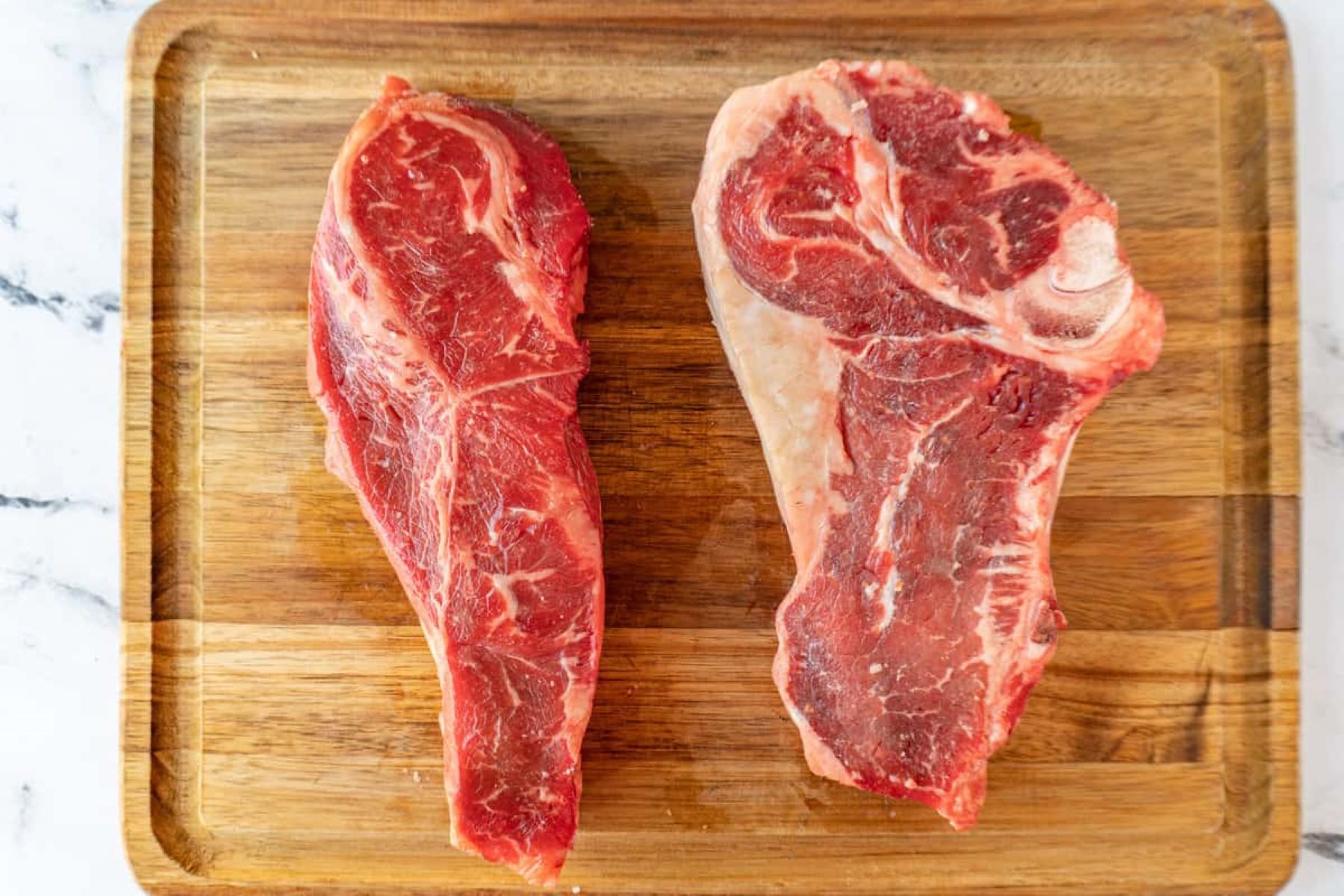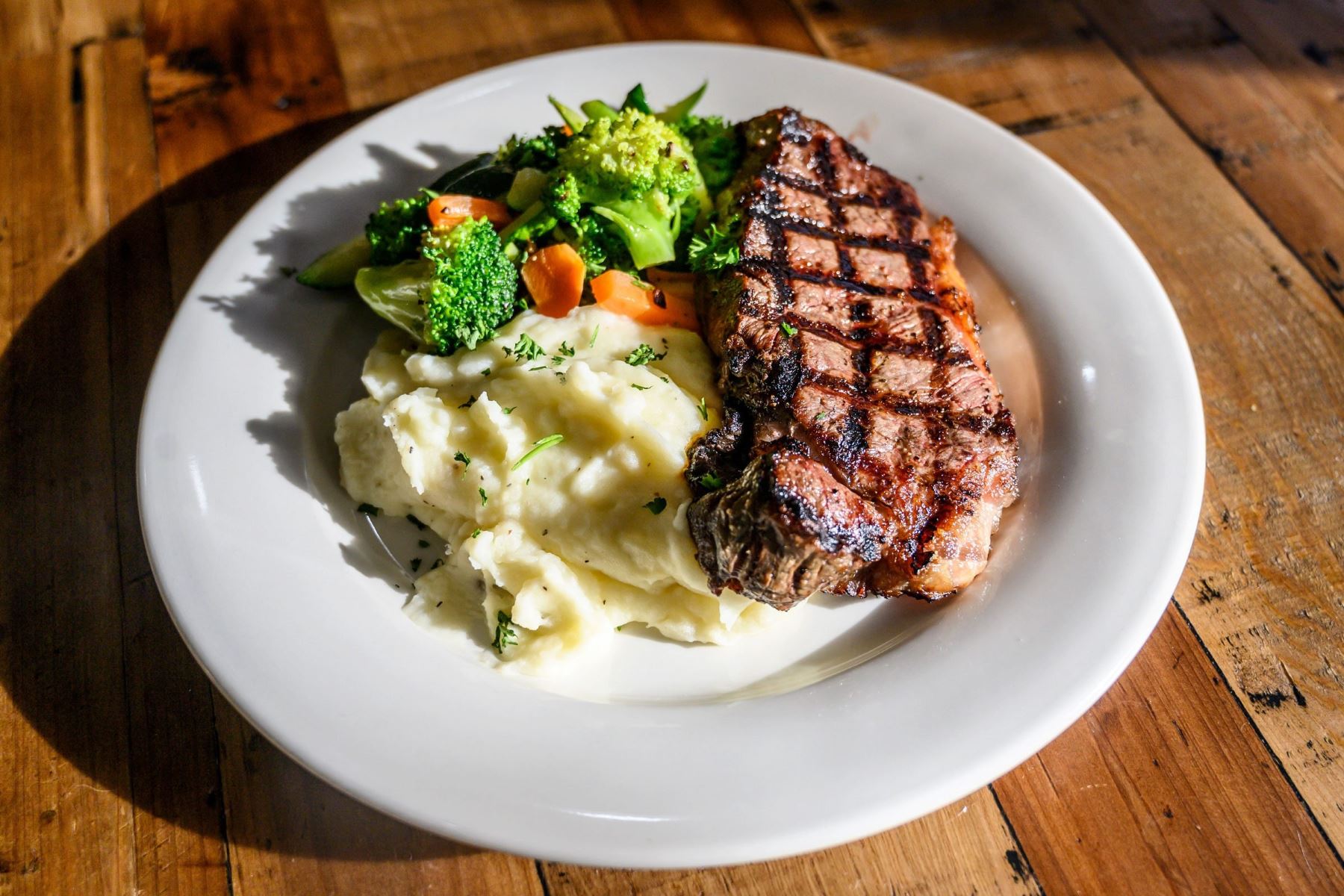Home>Food and Cooking>The Ultimate Showdown: Tonkotsu Vs Miso Ramen – Which Will Reign Supreme?


Food and Cooking
The Ultimate Showdown: Tonkotsu Vs Miso Ramen – Which Will Reign Supreme?
Published: February 1, 2024
Discover the ultimate battle between Tonkotsu and Miso Ramen, and find out which one will emerge victorious in the world of Food and Cooking. Uncover the secrets behind these two beloved dishes and choose your champion!
(Many of the links in this article redirect to a specific reviewed product. Your purchase of these products through affiliate links helps to generate commission for Regretless.com, at no extra cost. Learn more)
Table of Contents
Introduction
Ramen, the beloved Japanese noodle soup, has captured the hearts and palates of food enthusiasts worldwide. Its rich history, diverse flavors, and customizable elements make it a culinary masterpiece. In this article, we delve into the epic battle between two iconic ramen variations: Tonkotsu and Miso. These two styles boast distinct characteristics, from their broth base to their toppings, and have garnered devoted followings in the culinary realm.
As we embark on this gastronomic journey, we will uncover the origins of ramen, explore the fundamental components of Tonkotsu and Miso ramen, dissect their flavor profiles and ingredients, and compare their nutritional value. Additionally, we will examine the popularity and availability of these delectable dishes, setting the stage for an enlightening exploration of these revered culinary creations. So, prepare your taste buds for an immersive experience as we navigate the intricate world of Tonkotsu and Miso ramen.
The History of Ramen
Ramen, often associated with Japanese cuisine, has a history as rich and diverse as its flavorful broth. Its origins can be traced back to China, where wheat noodles were a staple. However, it wasn't until the late 19th century that ramen made its way to Japan, evolving into a beloved culinary tradition.
The early versions of ramen were simple, consisting of wheat noodles served in a broth. Over time, as Japan underwent cultural and culinary transformations, ramen adapted and diversified, reflecting regional preferences and local ingredients. The dish's evolution was influenced by factors such as trade, migration, and innovation, leading to the creation of various regional ramen styles.
Ramen gained widespread popularity in Japan following World War II when food shortages prompted the widespread consumption of noodles. This period marked the emergence of ramen stands and shops, setting the stage for its eventual global acclaim.
In the ensuing decades, ramen continued to evolve, with chefs and enthusiasts experimenting with different broths, noodle textures, and toppings. This culinary experimentation led to the development of iconic ramen variations, such as Tonkotsu and Miso, each with its own unique characteristics and loyal fan base.
Today, ramen has transcended its cultural origins, becoming a global culinary phenomenon. Its popularity has soared, with ramen shops and restaurants found in major cities worldwide, offering diverse interpretations of this beloved noodle soup.
As we delve into the history of ramen, it becomes evident that this humble dish has undergone a remarkable journey, evolving from a simple noodle soup to a revered culinary icon celebrated for its depth of flavors and cultural significance. The legacy of ramen is a testament to the enduring power of food to unite people and bridge diverse culinary traditions, making it a cherished symbol of culinary innovation and cross-cultural exchange.
The Basics of Tonkotsu Ramen
Tonkotsu ramen, renowned for its rich and creamy broth, is a revered member of the ramen family, originating from the Fukuoka Prefecture in Japan. At the heart of this beloved dish lies its signature broth, which is meticulously crafted through a lengthy and labor-intensive process. The broth is derived from pork bones, typically simmered for hours until the collagen and marrow break down, resulting in a velvety, opaque liquid that exudes depth and umami richness.
The foundation of Tonkotsu ramen's flavor profile rests upon this luscious broth, which serves as the canvas for a harmonious interplay of savory and aromatic elements. The noodles, customarily thin and firm, are meticulously selected to complement the robustness of the broth, offering a satisfying textural contrast. Additionally, the toppings and garnishes play a pivotal role in enhancing the overall dining experience. Slices of succulent chashu (braised pork belly), tender bamboo shoots, scallions, and a perfectly cooked soft-boiled egg are common accompaniments that elevate the dish to gastronomic heights.
The allure of Tonkotsu ramen lies not only in its indulgent flavors but also in its adaptability to diverse palates. While the traditional preparation remains a timeless favorite, chefs and ramen enthusiasts have embraced creative variations, infusing the broth with additional aromatics or experimenting with unconventional toppings. This culinary innovation has resulted in a myriad of Tonkotsu ramen interpretations, each offering a unique sensory experience.
In essence, Tonkotsu ramen embodies the art of patience and precision, with its allure lying in the meticulous attention to detail and the dedication required to achieve its unparalleled depth of flavor. As a cornerstone of Japanese culinary tradition, Tonkotsu ramen stands as a testament to the artistry and ingenuity that define the world of ramen, captivating enthusiasts with its velvety broth, toothsome noodles, and an array of delectable toppings.
The legacy of Tonkotsu ramen endures as a symbol of culinary excellence, inviting aficionados to savor its timeless appeal and indulge in the comforting embrace of its soul-warming broth. Whether enjoyed in a bustling ramen shop or meticulously prepared at home, Tonkotsu ramen remains a cherished emblem of culinary craftsmanship, inviting enthusiasts to partake in its savory splendor and revel in the enduring legacy of this beloved noodle soup.
The Basics of Miso Ramen
Miso ramen, a revered member of the ramen family, boasts a distinctive flavor profile that sets it apart from its counterparts. Originating from the northern regions of Japan, particularly Sapporo in Hokkaido, Miso ramen showcases a robust and savory broth crafted from fermented soybean paste, known as miso. This fundamental ingredient infuses the broth with a complex umami depth, creating a deeply satisfying and comforting culinary experience.
At the heart of Miso ramen lies its flavorful broth, which serves as the cornerstone of its culinary identity. The process of preparing the broth involves simmering the miso with various aromatics, such as garlic, ginger, and onions, resulting in a rich and aromatic liquid that forms the foundation of the dish. The distinct umami notes derived from the miso impart a unique character to the broth, offering a harmonious interplay of savory and earthy flavors.
In addition to its flavorful broth, Miso ramen features a diverse array of toppings and garnishes that contribute to its overall sensory appeal. Common toppings include tender slices of chashu (braised pork), crisp bean sprouts, sweet corn kernels, and finely chopped scallions. These elements not only enhance the visual allure of the dish but also provide a textural and flavor contrast, elevating the dining experience to new heights.
The noodles used in Miso ramen are typically thicker and chewier, serving as a robust counterpart to the hearty broth. This textural contrast adds a layer of complexity to each slurp, allowing the diner to savor the interplay between the substantial noodles and the robust miso-infused broth.
Miso ramen's culinary allure extends beyond its traditional preparation, as chefs and enthusiasts continue to innovate, infusing the broth with additional ingredients and experimenting with diverse toppings. This culinary creativity has led to a myriad of Miso ramen interpretations, each offering a unique and captivating sensory experience.
In essence, Miso ramen embodies the art of balance and complexity, with its allure lying in the harmonious fusion of umami-rich miso, hearty noodles, and an array of delectable toppings. As a revered symbol of culinary innovation, Miso ramen invites enthusiasts to savor its timeless appeal and indulge in the comforting embrace of its soul-warming broth. Whether enjoyed in a bustling ramen shop or meticulously prepared at home, Miso ramen remains a cherished emblem of culinary craftsmanship, inviting aficionados to partake in its savory splendor and revel in the enduring legacy of this beloved noodle soup.
Flavor Profile and Ingredients
Tonkotsu Ramen:
The flavor profile of Tonkotsu ramen is characterized by its rich, creamy, and deeply savory broth, derived from simmering pork bones for an extended period. This meticulous process results in a broth that boasts a velvety texture and a robust umami depth, making it a comforting and indulgent culinary experience. The key ingredients in Tonkotsu ramen's broth include pork bones, aromatics such as garlic and ginger, and occasionally, vegetables, which contribute to its complex flavor profile. The resulting broth serves as the canvas for an array of toppings, including succulent chashu, tender bamboo shoots, scallions, and a perfectly cooked soft-boiled egg, adding layers of flavor and texture to the dish. The noodles used in Tonkotsu ramen are typically thin and firm, providing a satisfying contrast to the richness of the broth.
Miso Ramen:
In contrast, Miso ramen showcases a bold and savory flavor profile, attributed to its primary ingredient, fermented soybean paste, or miso. The broth of Miso ramen exudes a complex umami richness, complemented by aromatic elements such as garlic, ginger, and onions, resulting in a deeply satisfying and flavorful culinary experience. The robust miso-infused broth serves as the foundation for an assortment of toppings, including tender slices of chashu, crisp bean sprouts, sweet corn kernels, and finely chopped scallions, adding vibrant colors and diverse textures to the dish. Furthermore, the noodles used in Miso ramen are typically thicker and chewier, offering a substantial counterpart to the hearty broth and contributing to the dish's overall sensory appeal.
In essence, the flavor profiles of Tonkotsu and Miso ramen are distinct and captivating, each offering a unique interplay of savory, aromatic, and umami elements. While Tonkotsu ramen entices with its velvety and indulgent broth, Miso ramen captivates with its robust and complex miso-infused base. The diverse array of ingredients and meticulous preparation techniques employed in crafting these flavorful broths and accompanying toppings underscore the artistry and culinary ingenuity that define these beloved ramen variations.
Noodle Texture and Thickness
Noodles serve as the backbone of any ramen dish, playing a pivotal role in determining the overall dining experience. In the context of Tonkotsu and Miso ramen, the texture and thickness of the noodles are carefully chosen to complement the distinct characteristics of each broth and toppings, contributing to the harmonious interplay of flavors and textures.
In Tonkotsu ramen, the noodles are typically thin and firm, offering a resilient bite that contrasts with the velvety richness of the pork bone broth. This textural juxtaposition creates a dynamic sensory experience, allowing diners to savor the interplay between the substantial noodles and the luscious broth. The thin and firm noodles also serve as a vehicle for capturing the savory essence of the broth, ensuring that each slurp delivers a satisfying amalgamation of flavors.
In contrast, Miso ramen features noodles that are notably thicker and chewier, providing a robust counterpart to the hearty miso-infused broth. The substantial texture of the noodles enhances the overall mouthfeel, offering a more substantial and satisfying chew that complements the complex umami notes of the broth. This textural harmony between the noodles and the broth creates a deeply comforting and indulgent dining experience, allowing diners to relish the interplay of flavors and textures with each mouthful.
The careful selection of noodle texture and thickness underscores the meticulous attention to detail that defines the art of ramen preparation. Whether it's the resilient bite of thin noodles in Tonkotsu ramen or the substantial chew of thicker noodles in Miso ramen, these elements contribute to the overall sensory appeal of each dish, elevating the dining experience to new heights.
In essence, the noodle texture and thickness in Tonkotsu and Miso ramen are tailored to harmonize with the distinct characteristics of each broth, showcasing the culinary artistry and thoughtful consideration that define these beloved ramen variations. With each slurp, diners embark on a sensory journey that celebrates the interplay of textures and flavors, underscoring the enduring allure of these iconic noodle soups.
Toppings and Garnishes
Toppings and garnishes play a pivotal role in elevating the sensory experience of both Tonkotsu and Miso ramen, contributing to the visual allure, textural contrast, and diverse flavor profiles of these beloved noodle soups. Each topping and garnish is carefully selected to complement the rich broths and hearty noodles, adding layers of complexity and visual appeal to the dish.
In Tonkotsu ramen, the toppings are thoughtfully curated to enhance the indulgent nature of the dish. Succulent slices of chashu, tender bamboo shoots, finely chopped scallions, and a perfectly cooked soft-boiled egg adorn the velvety broth and delicate noodles. The chashu, often prepared through a meticulous braising process, offers a melt-in-your-mouth texture and a savory depth that harmonizes with the richness of the broth. The tender bamboo shoots provide a refreshing crunch, while the scallions impart a subtle pungent note, adding a burst of freshness to each spoonful. The soft-boiled egg, with its luscious yolk and creamy texture, serves as a luxurious addition, enriching the overall dining experience with its indulgent appeal.
On the other hand, Miso ramen boasts a diverse array of toppings and garnishes that contribute to its robust flavor profile. Tender slices of chashu, crisp bean sprouts, sweet corn kernels, and finely chopped scallions adorn the miso-infused broth and substantial noodles, creating a vibrant tapestry of colors and textures. The chashu, with its savory and succulent character, harmonizes with the umami richness of the miso broth, offering a satisfying contrast in every bite. The crisp bean sprouts and sweet corn kernels provide a refreshing and sweet crunch, while the scallions add a bright and aromatic note, enhancing the overall sensory experience.
In essence, the toppings and garnishes in Tonkotsu and Miso ramen are meticulously selected to complement the distinct characteristics of each dish, offering a symphony of flavors and textures that captivate the senses. Whether it's the indulgent elegance of Tonkotsu ramen's chashu and soft-boiled egg or the robust vibrancy of Miso ramen's bean sprouts and sweet corn, each topping and garnish contributes to the culinary narrative, underscoring the artistry and thoughtful curation that define these beloved ramen variations.
Nutritional Value
When considering the nutritional value of Tonkotsu and Miso ramen, it's essential to examine the components that contribute to the overall dietary profile of these beloved noodle soups. Both variations offer a unique blend of macronutrients, vitamins, and minerals, reflecting the diverse array of ingredients that define their flavor profiles and culinary appeal.
In Tonkotsu ramen, the richness of the broth derived from pork bones contributes to its notable nutritional composition. The collagen and marrow extracted during the simmering process infuse the broth with essential nutrients, including protein, calcium, and gelatin. Additionally, the inclusion of pork belly (chashu) as a topping provides a source of protein and essential fats, adding to the overall nutritional content of the dish. However, it's important to note that the high fat content in Tonkotsu ramen, particularly in the broth and pork belly, should be consumed in moderation as part of a balanced diet.
On the other hand, Miso ramen offers a distinct nutritional profile, primarily influenced by the fermented soybean paste (miso) used in its broth. Miso contributes to the dish's protein content, offering essential amino acids and beneficial probiotics that support digestive health. Additionally, the inclusion of protein-rich chashu and an assortment of vegetables as toppings further enhances the nutritional diversity of Miso ramen, providing essential vitamins and dietary fiber.
Both Tonkotsu and Miso ramen feature wheat-based noodles as a fundamental component, contributing to the carbohydrate content of the dishes. The noodles serve as a significant source of energy, complementing the protein and fat components present in the broths and toppings. However, it's important to consider portion sizes and overall dietary balance when incorporating ramen into a regular meal plan.
While the nutritional value of Tonkotsu and Miso ramen reflects the richness and complexity of their ingredients, it's essential to approach these dishes as part of a varied and balanced diet. Incorporating nutrient-dense ingredients, such as lean proteins, vegetables, and whole grains, alongside the indulgent experience of enjoying ramen can contribute to a holistic approach to culinary enjoyment and dietary wellness.
In essence, the nutritional value of Tonkotsu and Miso ramen showcases the diverse array of nutrients present in these beloved noodle soups. By understanding the nutritional components of each dish, individuals can make informed choices that align with their dietary preferences and overall wellness goals, allowing them to savor the culinary delights of ramen while maintaining a balanced approach to nutrition.
Popularity and Availability
The widespread popularity of Tonkotsu and Miso ramen extends far beyond the borders of Japan, captivating the palates of food enthusiasts across the globe. These iconic ramen variations have garnered devoted followings, with a growing number of ramen shops and restaurants dedicated to showcasing the diverse flavors and culinary artistry of these beloved noodle soups.
In major cities such as Tokyo, New York, London, and beyond, ramen aficionados can indulge in the authentic flavors of Tonkotsu and Miso ramen at specialized eateries that meticulously craft each component of the dish, ensuring an immersive and authentic dining experience. These establishments often pay homage to traditional ramen preparation techniques while embracing creative innovations, offering a diverse array of Tonkotsu and Miso ramen interpretations that cater to a broad spectrum of tastes and preferences.
The availability of Tonkotsu and Miso ramen has expanded significantly in recent years, with an increasing number of restaurants and food establishments embracing the art of ramen preparation. Additionally, the accessibility of high-quality ramen ingredients, including specialty noodles, artisanal broths, and authentic toppings, has contributed to the proliferation of ramen culture in various culinary landscapes.
Furthermore, the global culinary community has embraced the versatility of Tonkotsu and Miso ramen, leading to the emergence of fusion interpretations that integrate local ingredients and culinary influences, resulting in innovative and eclectic ramen creations. This culinary cross-pollination has further elevated the popularity of Tonkotsu and Miso ramen, showcasing the adaptability and enduring appeal of these beloved noodle soups in diverse cultural contexts.
In the digital age, the accessibility of ramen recipes, cooking tutorials, and culinary resources has empowered enthusiasts to recreate the flavors of Tonkotsu and Miso ramen in their own kitchens, fostering a vibrant community of home cooks dedicated to mastering the art of ramen preparation. This accessibility has contributed to a broader appreciation of Tonkotsu and Miso ramen, transcending geographical boundaries and fostering a global community of ramen enthusiasts.
In essence, the popularity and availability of Tonkotsu and Miso ramen underscore their enduring legacy as culinary icons, celebrated for their rich flavors, diverse interpretations, and cultural significance. As the global appreciation for ramen continues to flourish, the timeless allure of Tonkotsu and Miso ramen persists, inviting enthusiasts to embark on a flavorful journey that transcends borders and unites diverse culinary traditions.
Conclusion
In conclusion, the culinary landscape of Tonkotsu and Miso ramen represents a harmonious fusion of tradition, innovation, and sensory delight. These iconic noodle soups have captivated the palates of enthusiasts worldwide, showcasing the depth and diversity of Japanese culinary artistry. The rich history and evolution of ramen, from its humble origins to its global acclaim, underscore the enduring legacy of this beloved dish as a symbol of cross-cultural exchange and culinary innovation.
The epic battle between Tonkotsu and Miso ramen unveils a tapestry of flavors, textures, and culinary narratives, each offering a unique and captivating dining experience. The meticulous preparation of the rich and creamy Tonkotsu broth, derived from pork bones simmered to perfection, stands as a testament to the art of patience and precision. In contrast, the robust and savory Miso-infused broth, crafted from fermented soybean paste, showcases the art of balance and complexity, inviting diners to savor its deeply satisfying flavors.
Furthermore, the interplay of toppings and garnishes in Tonkotsu and Miso ramen adds a layer of visual allure and textural contrast, elevating the dining experience to new heights. Whether it's the indulgent elegance of Tonkotsu ramen's chashu and soft-boiled egg or the robust vibrancy of Miso ramen's bean sprouts and sweet corn, each topping and garnish contributes to the culinary narrative, underscoring the artistry and thoughtful curation that define these beloved ramen variations.
The enduring popularity and global availability of Tonkotsu and Miso ramen reflect their status as culinary icons, celebrated for their rich flavors, diverse interpretations, and cultural significance. As the global appreciation for ramen continues to flourish, the timeless allure of Tonkotsu and Miso ramen persists, inviting enthusiasts to embark on a flavorful journey that transcends borders and unites diverse culinary traditions.
In essence, the epic showdown between Tonkotsu and Miso ramen celebrates the art of culinary craftsmanship, inviting diners to indulge in a sensory symphony of flavors, textures, and cultural heritage. Whether enjoyed in a bustling ramen shop or meticulously prepared at home, Tonkotsu and Miso ramen stand as timeless emblems of culinary excellence, inviting enthusiasts to partake in their savory splendor and revel in the enduring legacy of these beloved noodle soups.













